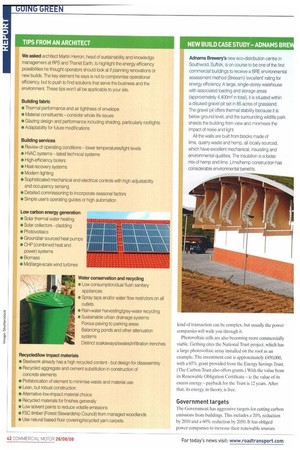TIPS FROM AN ARCHITECT
Page 42

If you've noticed an error in this article please click here to report it so we can fix it.
We asked architect Martin Herron, head of sustainability and knowledge management at RPS and Thanet Earth, to highlight the energy efficiency possibilities he thought operators should look at if planning renovations or new builds. The key element he says is not to compromise operational efficiency, but to push to find solutions that serve the business and the environment. These tips won't all be applicable to your site.
Building fabric • Thermal performance and air tightness of envelope • Material constituents consider whole life issues • Glazing design and performance including shading, particularly roof lights • Adaptability for future modifications Building services • Review of operating conditions lower temperatures/light levels • HVAC systems latest technical systems • High-efficiency boilers • Heat-recovery systems • Modem lighting • Sophisticated mechanical and electrical controls with high adjustability and occupancy sensing • Detailed commissioning to incorporate seasonal factors • Simple user's operating guides or high automation Low carbon energy generation • Solar thermal water heating • Solar collectors cladding • Photovoltaics • Ground/air sourced heat pumps • CHP (combined heat and power) systems • Biomass • Mid/large-scale wind turbines Water conservation and recyding • Low consumption/dual flush sanitary appliances • Spray taps and/or water flow restrictors on all outlets.
• Rain-water harvesting/grey-water recycling • Sustainable urban drainage systems: Porous paving to parking areas Balancing ponds and other attenuation systems Distinct soakaways/swales/infiltration trenches.
Recycled/low impact materials • Steelwork already has a high recycled content but design for disassembly • Recycled aggregate and cement substitution in construction of concrete elements • Prefabrication of element to minimise waste and material use • Lean, but robust construction • Alternative low-impact material choice • Recycled materials for finishes generally • Low solvent paints to reduce volatile emissions • FSC timber (Forest Stewardship Council) from managed woodlands • Use natural based floor covering/recycled yarn carpets.




































































































































































